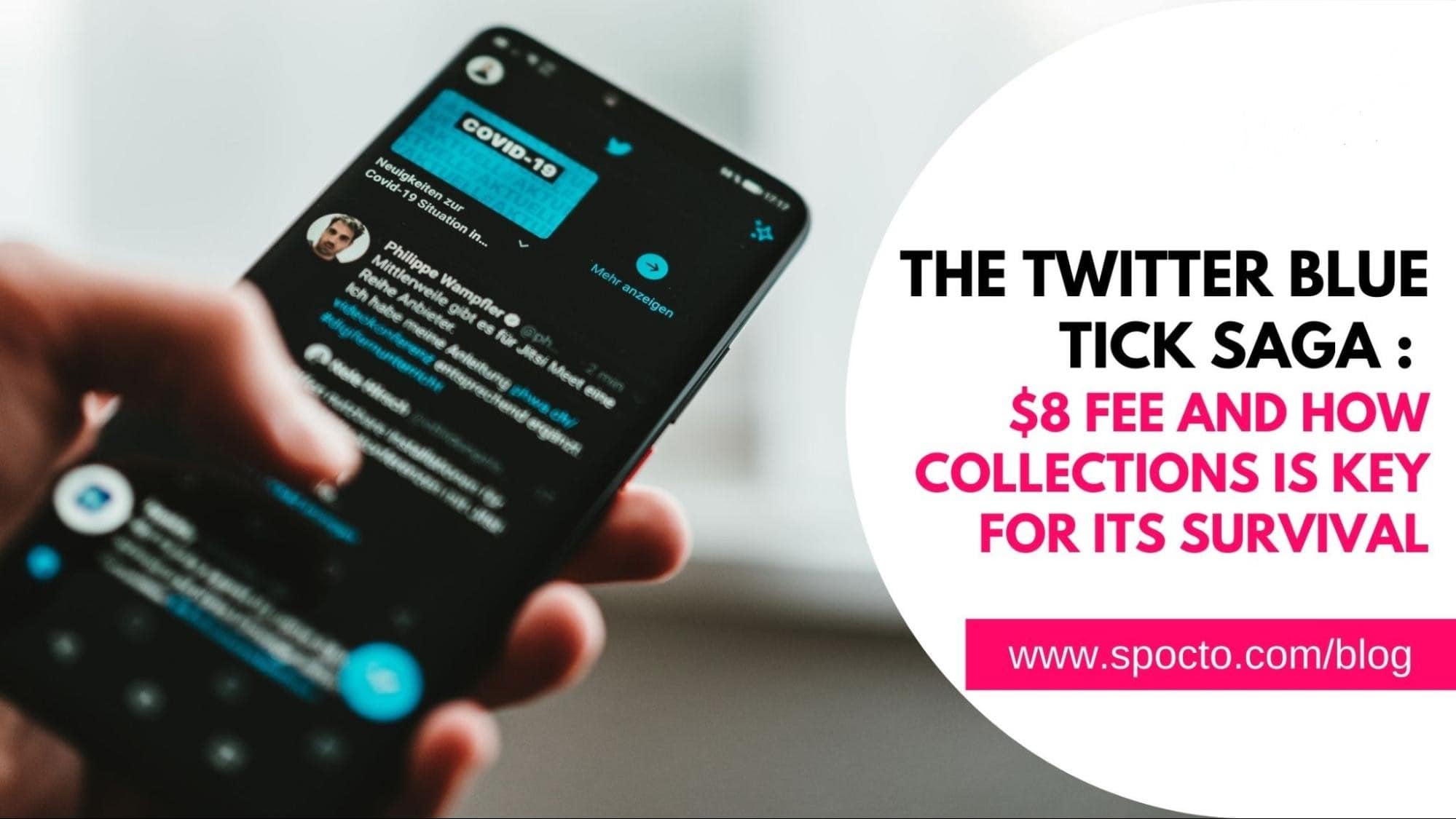The Twitter blue tick saga : Why Twitter revenue collections is key to its survival?

The Twitter blue tick saga : Why Twitter revenue collections is key to its survival?

It has been a tumultuous year in the world of big tech with most of the high-flying companies accustomed to buttressing investors with projections of never-ending growth humbled by real-world uncertainties. Facebook shares have collapsed by 66% in a year (as of 12th November 2022) wiping out $100 billion dollars from Founder/ CEO Mark Zuckerburg’s wealth. Amazon achieved the rather undesirable infamy of being the world’s first company to lose $1 trillion in market cap (July 2021 – Nov 2022). This erosion in share price value reflects challenges such as high inflation eroding discretionary spending, high interest rates and a post pandemic slowdown in e-commerce growth as consumers return to physical stores. It is no surprise then that the most popular micro blogging platform in the world, Twitter also finds itself in the throes of an existential crisis in part fueled by the ambitions of an extraneous factor- Elon Musk.
On April 14th 2022, Elon Musk announced that he wanted to buy Twitter for $54.20 a share valuing it for $44 billion. By April 25 Twitter accepted the deal, however by July 8th Elon wanted out. Musk and his lawyers claimed that Twitter failed to estimate the number of bots in the platform and misled regulators on safety practices. These arguments were sourced from the whistle blower report of Peter “Mudge” Zatko, the former Twitter Head of Security fired on July 2022. Twitter responded that the argument was invalid and took Musk to court to force him to buy Twitter at the original price. Just before the start of trial on October 4th, Elon Musk relented and sent an offer to buy Twitter at its original price: $54.20 a share. Finally on 27th October, a day before the court deadline Elon Musk bought Twitter for $44 billion dollars- a price that Musk admitted was overpaid. Investment funds seemed to agree, offering to pay only 60 cents to a dollar of the $13 billion in debt Musk took to finance the purchase.
The high price paid immediately put Musk- now the self-proclaimed ‘Chief Twit’ at Twitter at an odds to explain his future vision of the company. Musk claimed in an April 2022 interview with TED Talks founder Chris Anderson that the buyout is not about money but to promote civilization through a maximally trusted and broadly inclusive platform. Nevertheless, he immediately set out a brutal quest to cut costs and improve revenues.
Twitter’s balance sheet might provide an insight into Musk’s urgency to become profitable through drastic and often chaotic measures. In the Q2 earnings report just before the acquisition, Twitter posted a loss of $344 million- approximately $4 million loss a day which is a very disheartening burn rate. This was inspite of monetisable daily active users (mDAU) rising to 237.8 million in Q2 2022, up 16.6% compared to Q2 of the prior year. mDAU is a key metric that measures the number of Twitter users who logged in on any given day.
To increase cash flows, Musk announced plans for a $20 monthly subscription for Twitter verified accounts marked by a blue tick. However, user backlash was immediate with author Stephen King tweeted his displeasure on October 31. Musk replied that he was ready to settle for $8 but needed to ‘pay the bills somehow’.

Many users remarked that a paid blue tick might put up an economic barrier to free speech. Others such as Ethereum founder Vitalik Buterin offered conditional support mentioning that the paid verification must work in consonance with ‘actual verification’ of profiles to ensure their authenticity.

Twitter generates 91% of its revenue through advertisement and 9% from subscription, data licensing, and others (Q2 2022). Advertising revenues saw a near-flat growth of only 2% while subscription revenues decreased by 27%. This drastic degrowth of subscription revenues might have triggered Musk’s ire, given his stated aim to generate as much as 55% of revenues from subscriptions by 2028, up from the 9% currently. 

Twitter has currently 420,000 verified accounts eligible to display the blue tick which is less than 0.2% of its 240 million daily active users. Optimistically, even if all of these users adopt the $8 monthly subscription fee, the subscription revenue generated shall be only $40.32 million yearly. This translates into a revenue of a measly $0.1 million per day from blue tick subscriptions compared to the current loss of $4 million per day- making hardly a dent in the path to profitability.
Musk projects the number of Twitter users to grow from 237 million just before the acquisition saga in June to 600 million in 2025. He estimates the number of Twitter blue users to be 69 million in 2025. In this scenario, the blue tick subscriptions may generate $6.62 billion in revenue yearly in 2025. That’s nearly $18.15 million a day over and above what Twitter earns currently and can make Twitter profitable if costs are controlled. However, this assumes a CAGR of 36% in user growth till 2025 compared to the 16% currently. In the current scenario, the overall sentiment of Twitter users is relatively unenthusiastic. As of now, apart from the coveted blue tick, they don’t gain anything such as prioritized placement in replies, the ability to post longer videos, and 50 percent fewer ads in the feed. All of these features are listed as coming soon.
It is difficult to say how people shall flock to Twitter in such large numbers. Perhaps Twitter shall catch another lucky break such as on Jan. 15, 2009, when U.S. Airways Flight 1549 landed on the Hudson river. Also known as the ‘miracle on Hudson’, rescuers gave updates on Twitter in real-time exploding its popularity. Or perhaps it has been Musk’s plan all along to make Twitter the first social network to capture the landing of man on Mars. In that case, he definitely has a tall task in both engineering and user experience as Captain Chesley “Sully” Sullenberger III, the pilot who landed the plane in the Hudson has quit Twitter over the drastic changes in the platform in recent days.
The goal of spocto is to completely transform the field of collections. Through the use of proprietary algorithms, we work to improve the collection efficiency, enhance customer experience and ensure perfect compliance.
We have processed volumes over 100 B USD till date, and served nearly 25% of Twitter’s universe.
Read Next
ICC T20 World Cup expected to generate collections of $1 billion. spocto explores how.
Worldwide cricket enthusiasts are anticipating the biggest cricketing event of the year. With good cause, too! The ICC World Cup is usually a spectacular event that features some of the world’s top cricket action along with drama and excitement.
